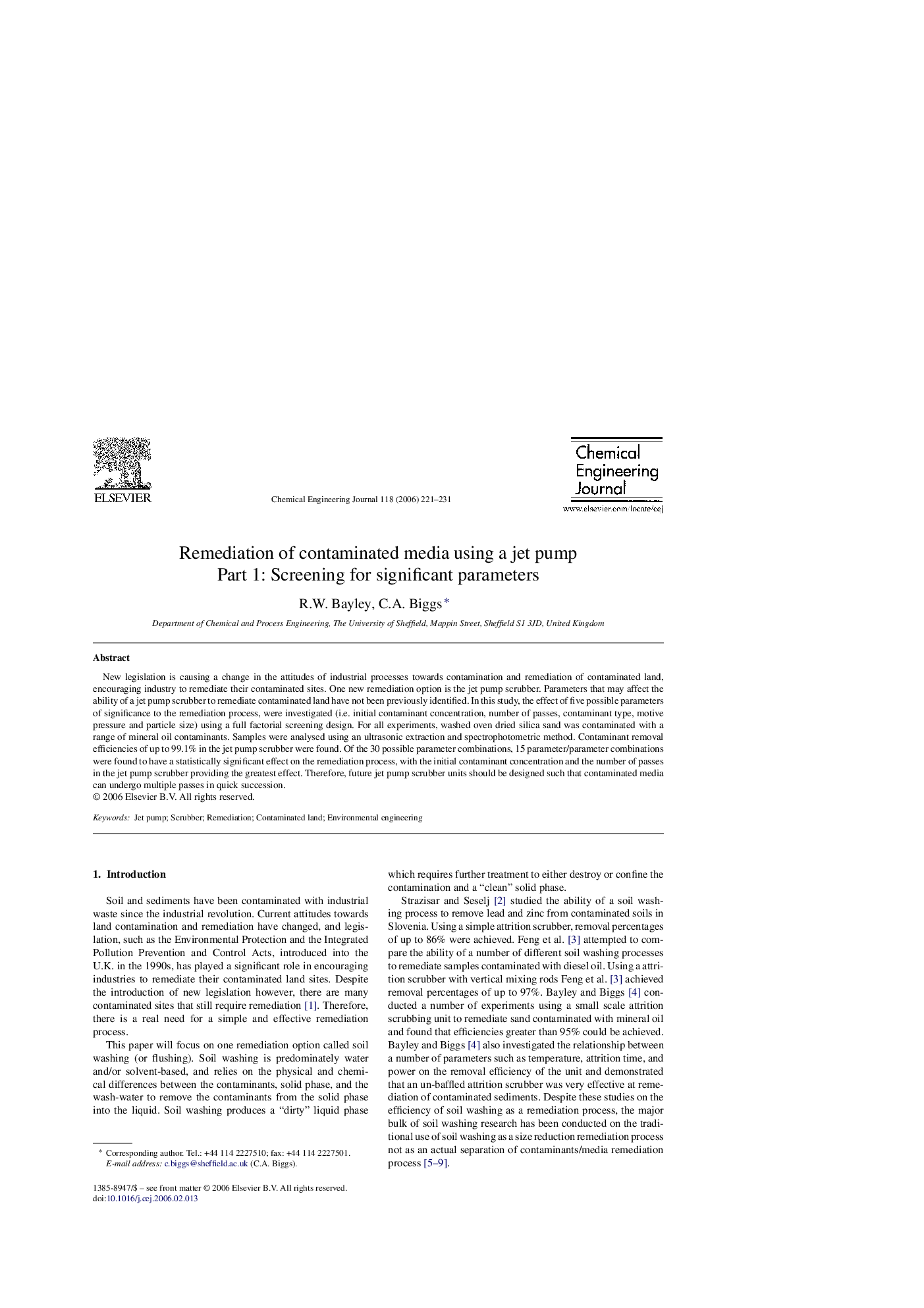| Article ID | Journal | Published Year | Pages | File Type |
|---|---|---|---|---|
| 154102 | Chemical Engineering Journal | 2006 | 11 Pages |
New legislation is causing a change in the attitudes of industrial processes towards contamination and remediation of contaminated land, encouraging industry to remediate their contaminated sites. One new remediation option is the jet pump scrubber. Parameters that may affect the ability of a jet pump scrubber to remediate contaminated land have not been previously identified. In this study, the effect of five possible parameters of significance to the remediation process, were investigated (i.e. initial contaminant concentration, number of passes, contaminant type, motive pressure and particle size) using a full factorial screening design. For all experiments, washed oven dried silica sand was contaminated with a range of mineral oil contaminants. Samples were analysed using an ultrasonic extraction and spectrophotometric method. Contaminant removal efficiencies of up to 99.1% in the jet pump scrubber were found. Of the 30 possible parameter combinations, 15 parameter/parameter combinations were found to have a statistically significant effect on the remediation process, with the initial contaminant concentration and the number of passes in the jet pump scrubber providing the greatest effect. Therefore, future jet pump scrubber units should be designed such that contaminated media can undergo multiple passes in quick succession.
